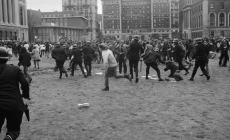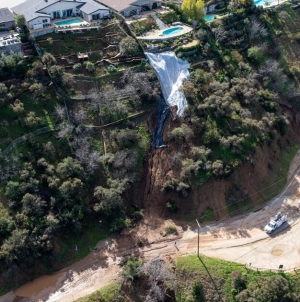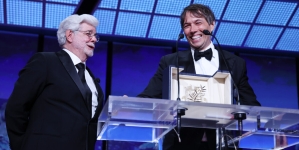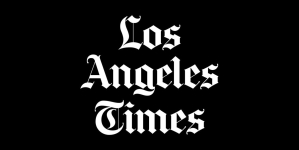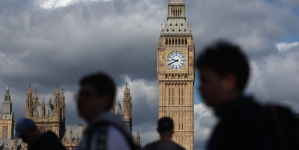-
From Free Speech to Free Palestine: Six Decades of Student Protest - May 5, 2024
-
A portion of Mulholland Drive, damaged by mudslides in winter storms, reopens - May 26, 2024
-
‘Maybe You Don’t Want to Win’ - May 26, 2024
-
Donald Trump Putting Law Enforcement in Danger: Attorney - May 26, 2024
-
Avoid the waters of these 5 L.A. County beaches this holiday weekend, public health officials say - May 26, 2024
-
Bawdy Comedy ‘Anora’ Wins Palme d’Or at Cannes Film Festival - May 26, 2024
-
Map Shows Heat Wave Zone Spread Into Five New States - May 26, 2024
-
Azusa police arrest suspected slingshot-wielding vandal - May 25, 2024
-
Donald Trump Hammers Judge Ahead of Jury Instructions - May 25, 2024
-
Sometimes U.S. and U.K. Politics Seem in Lock Step. Not This Year. - May 25, 2024
From Free Speech to Free Palestine: Six Decades of Student Protest
An American college student looked out at a sea of protesters and spoke of a machine that had grown so “odious” that it had left people of good will little choice. There must be protest.
“You’ve got to put your bodies upon the gears and upon the wheels, upon the levers, upon all the apparatus, and you’ve got to make it stop,” he said. Soon the students would flood into a campus administration building.
That scene played out 60 years ago at the University of California, Berkeley. The words were directed at the university leadership, and referring to its restrictions on campus political activity. But the speech, from the student leader Mario Savio, and the sit-in that followed could have happened yesterday.
The protests against Israel’s war in Gaza that have erupted on college campuses around the United States are merely the latest in a tradition of student-led, left-leaning activism dating back at least to the civil rights and anti-Vietnam War protests of the 1960s.
Often, the protests have played out on college campuses, and sometimes in the same building as previous years: Hamilton Hall at Columbia University, was taken over by students in the protests of 1968 as well as this past week and at least four times in between. Sometimes the protests have seemed to be off-campus adaptations, like the Occupy Wall Street demonstrations of 2011 or the racial justice demonstrations of recent years.
Like today’s protests, most of the older movements were highly polarizing. Some observers at the time praised protesters for their courage and idealism, while others criticized them for being misguided, self-indulgent or guilty of flirting with — or embracing — irresponsible and even dangerous rhetoric and ideas.
A high propensity to offend can seem inextricably intertwined with the fresh thinking that college-age students often bring to the world’s most difficult questions. “When you’re talking about college students, you are talking about people who are barely out of childhood,” said Rick Perlstein, the historian and author, in an interview this week. “People who are barely out of childhood and basically on their own for the first time, and exploring ideas for the first time, sometimes say crazy things.”
Some of the student protests, like the Civil Rights and anti-apartheid movements, helped achieve tangible goals that have become broadly accepted over time. Others continue to stir debate about their wisdom and efficacy. The current movement is notable for the way it has divided not only Americans in general, but Americans who identify as liberal, over the thorny question of when criticism of Israel veers into antisemitism.
Like the older movements, the current one is likely to be the subject of decades of research into its origins, its aims and its aftereffects. In the short term, politicians, including the presumptive Republican and Democratic presidential nominees, are implicitly acknowledging its potential power to sway elections in the way the demonstrations of 1968 are often credited with helping to doom the Democratic presidential candidacy of Hubert H. Humphrey and elect Richard M. Nixon.
Former President Donald J. Trump has called the protests a “disgrace to our country.” On Thursday, after protesters and the police clashed dramatically at the University of California, Los Angeles, and other campuses, President Biden sought a middle ground. “There’s the right to protest,” he said, “but not the right to cause chaos.”
1960s
The Civil Rights Movement
The idea of the progressive college student as a force in public life is a relatively recent development.
“Universities from the medieval era probably up to the 1930s were supposed to be sanctuaries from politics and society,” said Kenneth Heineman, a historian at Angelo State University in Texas. Though student protesters made waves in the earlier part of the 20th century, the template for student protest coalesced in the 1960s, as Baby Boomers swelled the ranks of colleges and universities in a wealthy country that was beginning to confront its long history of racism, and would soon be engulfed by the Vietnam conflict — one in which 61 percent of the 58,000 American soldiers killed were under 21 years old.
One of the early sit-ins protests that sought to desegregate restaurants and other public places in the South was carried out by four students from historically Black North Carolina A&T State University, who took spots at lunch counters reserved for whites in Greensboro, N.C., and politely refused to leave when asked.
Many participants in the Freedom Rides of 1961 were also college students and were confronted with violent mobs who met them in the Deep South. A college group called the Student Nonviolent Coordinating Committee, or S.N.C.C., participated in the Freedom Rides and engaged in voter registration efforts in Mississippi.
With these and other efforts, the American college student began to be seen as a catalyst for profound structural change. But the protests hardly brought universal praise. In a 1961 Gallup poll, 57 percent of respondents said that sit-ins and Freedom Rides would hurt, rather than help, the cause of integration.
“Student movements in the United States are never popular off campus,” said Robert Cohen, a historian at New York University. “And that’s a reflection of a kind of underlying cultural conservatism of the country. It’s like, ‘Shut up and study. You’re not respecting your elders, you’re supposed to be seen, not heard.’”
1964
The Free Speech movement at the University of California, Berkeley
In 1964, students at the University of California, Berkeley protested free speech limitations that had been enacted in earlier years amid a fear of the radical left.
After a sit-in action in the school’s administration building, the protesters, who collectively became known as the Berkeley Free Speech Movement, saw the restrictions abolished. Soon American colleges had entered in a new era in which a paternalistic model of administration, which often governed not only student speech but dress and dating, began to fall away.
This new freedom helped midwife the decade’s counterculture movement, though by the early 1970s, it would fall apart under the weight of its own excesses, which Mr. Perlstein, a man of the left, once tartly described as “a blaze of numbskull adventurism and Maoist masquerade.”
1968-1973
Vietnam
By the mid-1960s, the United States had begun dramatically increasing its troop presence in Vietnam. Beginning in 1964, and continuing through 1973, the federal government would draft 2.2 million men into military service. And college campuses would spend years in upheaval.
The high-water mark of U.S. campus protests would come in 1970, with news of President Nixon’s expansion of the war effort into Cambodia. Students were also incensed by fatal shootings of students by authorities amid protests at Jackson State University, in Mississippi, and Kent State University in Ohio. Students at 900 schools took part in a coordinated strike, according to an analysis by the University of Washington.
The televised scenes of chaos at American schools, and the growing radicalization of some elements of the antiwar movement, created a significant backlash. One Gallup poll from May 1970 showed that 58 percent of respondents blamed the students for the Kent State shootings, in which the Ohio National Guard killed four students and injured nine. (The shootings came after protests in which some protesters threw rocks at the troops, and an R.O.T.C. building had burned down.) A Gallup poll from the previous year had found that 82 percent of Americans were in favor of expelling militant students from school.
But historians and others said that the large-scale protests on and off campus pressured the Nixon administration to hasten U.S. withdrawal from Vietnam, with the last American combat troops leaving the country in January 1973.
1970-1990
The Anti-Apartheid movement
From the end of the Vietnam era to the present day, college campuses have occasionally flared with left-wing dissent, protesting U.S. intervention in Central America, domestic policy issues and military actions in the Middle East.
In the 1970s and 1980s, student-led movements sprang up on numerous college campuses calling on schools to divest from companies that did business in South Africa, which at the time was under white apartheid rule. Students on many campuses erected shanties in solidarity with poor Black South Africans, and a number of schools divested, at least partially, from companies with investments in South Africa.
Though they were only one factor that led to the fall of apartheid in the early 1990s, the South Africa divestment movement directly inspired the current demands that schools divest from businesses connected to Israel.
These demands are part of the broader effort targeting Israel known as the Boycott, Divestment and Sanctions movement, which calls upon nations, businesses and schools to sever links with Israel unless it meets a number of demands, including ending its occupation of all land captured in 1967 and allowing Palestinian refugees and their descendants to return to properties from which they were displaced during the period that Israel was established.
Though not a student movement per se, Occupy Wall Street, the 2011 grass-roots movement against corporate greed and income inequality, introduced a new generation to the idea of widespread protest, and eventually spread to a number of college campuses.
The epicenter of the movement was in Manhattan’s financial district, in Zuccotti Park, which protesters occupied for a series of weeks. Their improvised tent city has been echoed in the pro-Palestinian protests, where pitched tents on campus have, aside from student bodies, been the most visible sign of the Gaza protests.
Until this year’s pro-Palestinian protests, the most formative political experience in the lives of today’s college activists was arguably the series of antiracist street protests that rocked the United States beginning with a Florida vigilante’s killing of Trayvon Martin, an unarmed Black man, in 2012, and reached a peak after a Minneapolis police officer murdered George Floyd, in 2020.
Many activists, like Vonne Crandell, a Tulane student and activist, saw the Palestinian struggle and the effort to end racism in the United States as part of the same broader fight against colonial powers exploiting indigenous people and people of color.
Black activists in the United States have a long and complicated history when it comes to the Arab-Israeli conflict. Soon after the 1967 war between Israel and neighboring Arab states, leaders of the S.N.C.C., which had grown increasingly radicalized, stated that Jews were “imitating their Nazi oppressors” by using terror tactics on Arabs. Such statements led to denunciations from more moderate Civil Rights forces just as comparisons of Israelis to genocidal regimes are making more moderate liberals queasy today.
For Mr. Crandell — a Black man who was suspended from Tulane this week for his participation in the protests — there is no debate. “We are witnessing a genocide in real time,” he said in a phone interview on Tuesday.
Speaking of Black Americans and Palestinians, he added: “All of our struggles are together.”
Susan Beachy contributed research.


